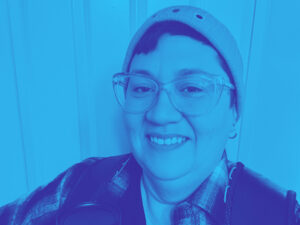 Our May Instructor Spotlight is Amy Tureen. Amy will be teaching Reparations-Informed Purchasing on Tuesday, May 14 from 2 - 3 p.m. EST.
Our May Instructor Spotlight is Amy Tureen. Amy will be teaching Reparations-Informed Purchasing on Tuesday, May 14 from 2 - 3 p.m. EST.
Amy Tureen is the Dean of Academic Success Programs at South Puget Sound Community College. Her research focuses on multiple intersections of leadership, DEI, and both organizational and individual wellness. She is the co-editor of both Leadership Wellness and Mental Health Concerns in Higher Education (2022, IGI) and the forthcoming book, Making Values-Based Decisions (expected 2025, ACRL)
We recently chatted with Amy as part of our Instructor Spotlight Series to learn more about the upcoming class.
Can you let attendees know a little about what to expect in the class?
AT: In this class I'll be sharing the reparations-informed purchasing model I ideated and have been refining with colleagues at two different institutions. The reparations-informed purchasing model intentionally and purposefully redirects a portion of collection budget dollars to small, BIPOC-owned bookstores. The model is rooted in the beliefs that higher education institutions have an obligation to acknowledge the historical harm of the academic research industry, that BIPOC communities should fiscally benefit from content about them, that BIPOC bookstore owners are content curators whose expertise is currently underutilized by library collection builders, and that there is a critical need for libraries to be intentional not only when deciding what to buy, but also where they buy it from. I'll be covering the philosophy the underpins the model, the history of the model as it went from pilot project to established policy, and the model's strengths and weaknesses. I'll also be covering how to scale the project to meet the unique needs of individual institutions and budgets, as well as providing some language to address the most common questions and concerns about the model.
Are there any concepts you’d like attendees to be familiar with coming into your class?
AT: No prior reading or review is necessary! I just ask that people come with an open mind and remember that the model is intentionally scalable. I would particularly encourage folks from large institutions to approach the presentation with the question of "what would be a sustainable dollar amount to commit to a model of this type?" rather than imagining it as an all or nothing proposal.
Can you share a bit about your background and how you came to focus on the challenges for BIPOC bookstores?
AT: Both of my parents were teachers, and my mother eventually became a principal, a district-level program director and then an assistant superintendent, so matters of curriculum were always being discussed at home. Part of that discussion was always about finding materials that reflected the experiences of my parents' primarily non-white students, as well as exposing the students to different perspectives than their own or those focused on by largely white and male-controlled media. I carried that concern into my work first as an adjunct professor of English and then, once I retrained, as a librarian with collection development duties. Over time I began to wonder if simply collecting the works of diverse authors or on topics of diversity was not, in some way, tokenizing and perpetuating a cycle of taking from communities of color rather than investing in them. This led me to think about ways collection work could be reimagined to not only focus on the voices of historically decentered people and communities, but to also invest actual actionable dollars into the cultural keepers and cultural centers of these communities.
For fun, we love hearing from our instructors about what they are currently reading, listening to or watching. Any recommendations?
AT: I recently rapidly read my way through Richard Osman's entire Thursday Murder Club series. There are four books in the series currently, with at least one more slated to be published in the next few years. The series focuses on the elderly residents of an English retirement community who crack cold and, eventually, contemporaneous murder cases. The residents themselves are slowly shown to be far more than they initially seem, some with truly extraordinary backstories and experiences. It runs the gamut of touching to thriller and is oftentimes laugh out loud funny.
